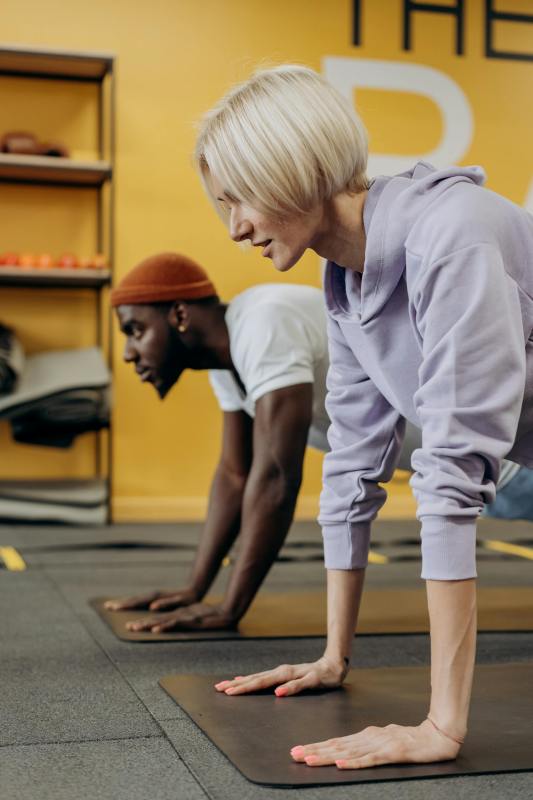Around 39% of adults in the United States deal with back pain, according to the Centers for Disease Control and Prevention. Research shows that lumbar stabilization exercises and stretching and strengthening exercises can help reduce back pain. One of the reasons exercise could be beneficial for diminishing those aches or twinges is because it lowers inflammation. Studies reveal that just 20 minutes of exercise has anti-inflammatory effects. There are different types of exercise, and working out at home is more convenient and affordable, offering you the privacy and comfort of your own space. A new study reveals that a specific type of online exercise class could also help your back pain. Let’s look at the research.
The study

In a study published in Jama Network Open, the researchers categorized patients into two groups:
- Yoga group 1 — participants received virtual hatha yoga classes.
- Waitlist group 2 — participants were on a waitlist for yoga.
The study participants were Cleveland Clinic employee health plan patients in Florida and Ohio. Patients in group 1 were given detailed workbooks and video recordings to help them safely practice yoga at home. The trained teachers demonstrated using supportive props like chairs and blocks to adapt poses when necessary.
The study results

When the study began, the participants reported back pain levels of around 6 out of 10. After six weeks, group 1, who practiced yoga, reported that their pain levels dropped to 4. After six months, pain levels declined to 3. Group 2, who didn’t practice yoga, noted that their pain levels remained the same.
74% of participants were taking some type of pain medicine at the start of the study. Six months on, over half of the patients in the waitlist group were still taking ibuprofen, aspirin, opioids, and other pain medicines. Less than one-third of the yoga group continued taking pain relievers.
Patients with back pain who took 12 weeks of online live-streamed yoga classes also moved more easily and slept better than individuals on the wait list for the classes.
If you’re dealing with chronic back pain, it’s best to consult with your healthcare provider, doctor, or physical therapist to rule out any underlying health problems. It’s possible that for some people, yoga could aggravate certain issues.
The benefits of yoga

Yoga is a meditative movement where you perform specific physical poses and postures while focusing on deep breathing. There are more fast-paced types of yoga that can raise your heart rate higher or slower and gentler practices.
Growing research highlights the many benefits of practicing yoga, such as:
- Lower stress and anxiety.
- Decrease back pain.
- Improve the quality of life in those with chronic conditions.
- Stimulate brain function.
- Help reduce the risk of heart disease.
- Enhance muscular strength and body flexibility.
- Improve sleep.
- Promote and improve cardiovascular and respiratory function.
The takeaway

The study’s senior author noted that pain levels were cut in half when patients practiced yoga. Online yoga classes are more accessible and allow you to be guided by an experienced yoga teacher while still working out from the comfort of your home. You don’t have to travel to attend in-person yoga classes to get the benefits.




